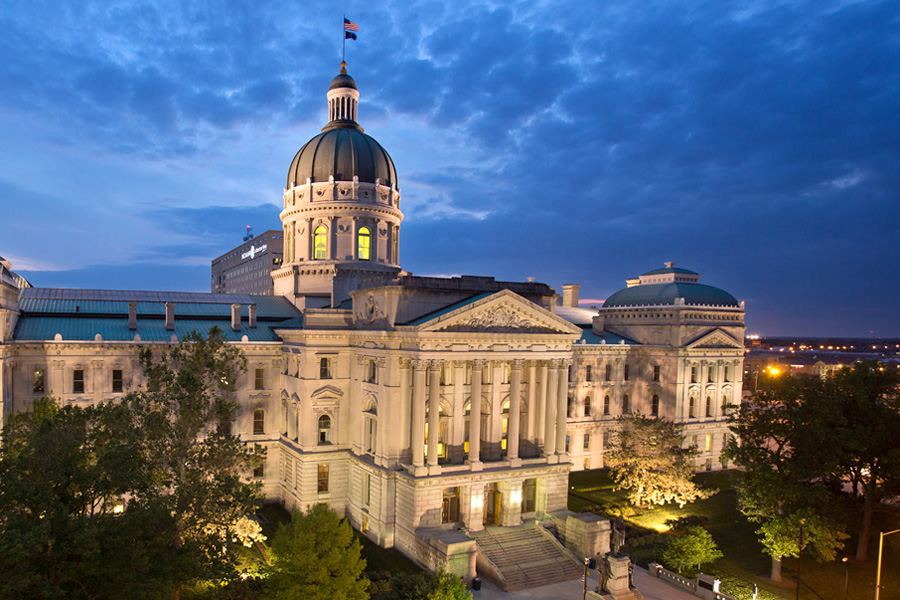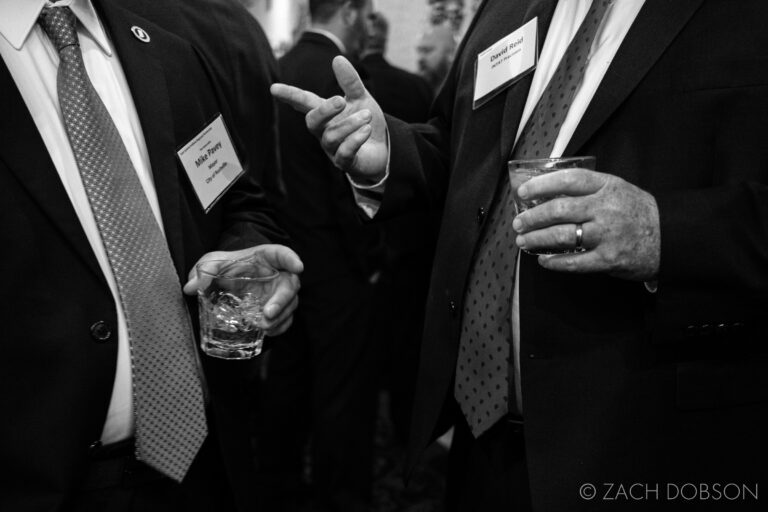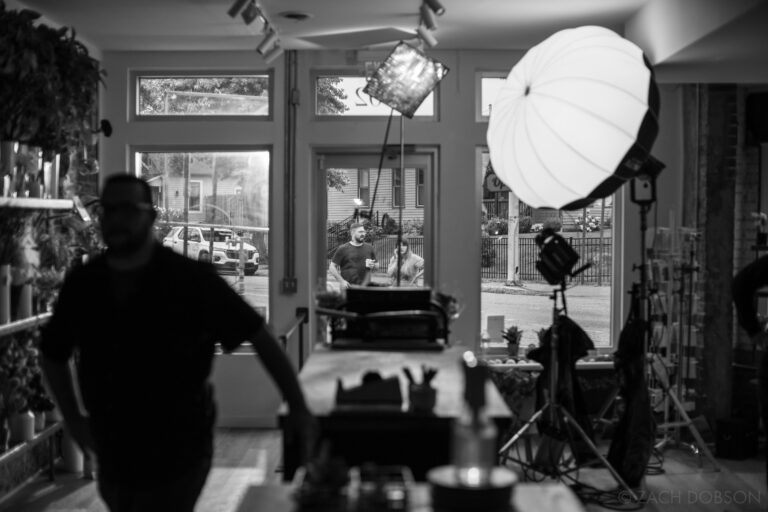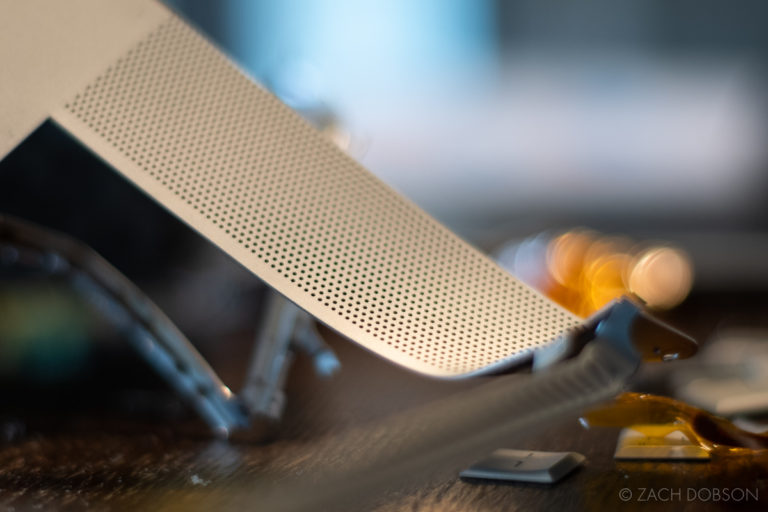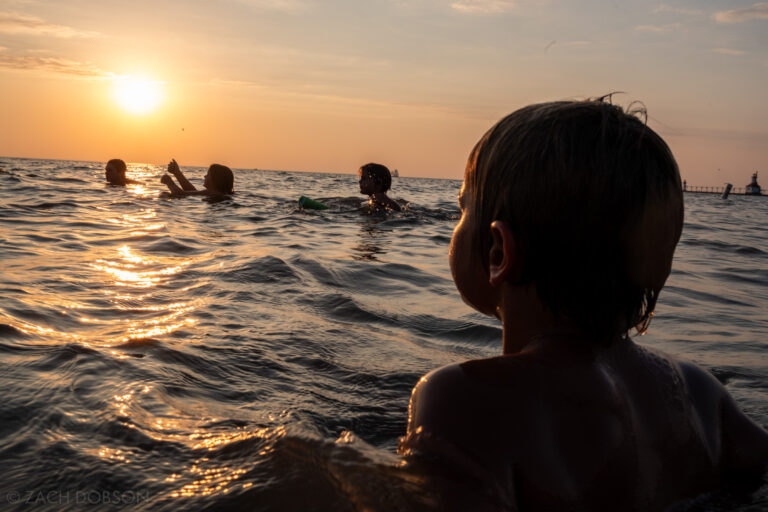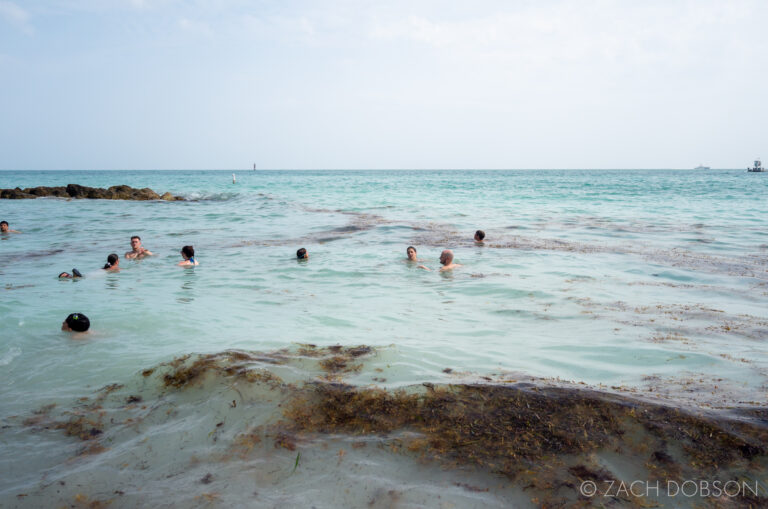Creating Art with Art: Documentary Photography at Museums
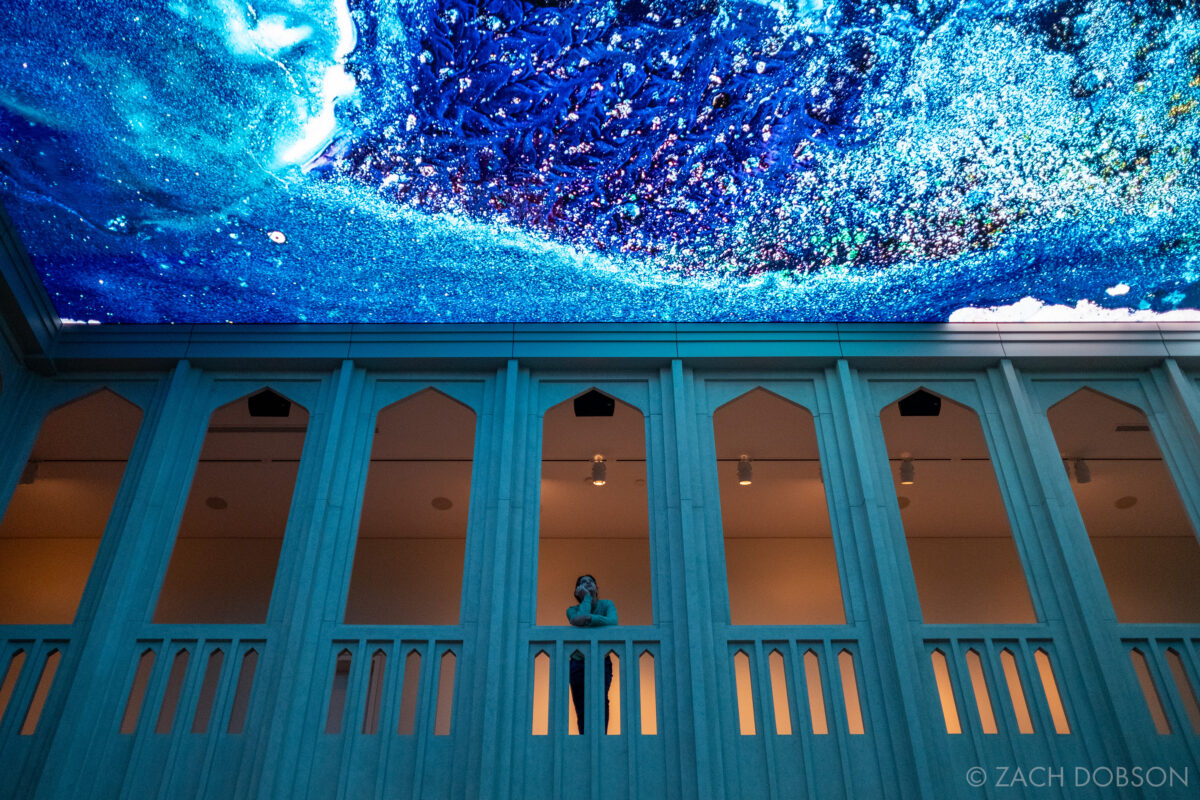
For the last hundred years there have been photographers creating documentary photography at museums.
Famed photographer Elliott Erwitt documented so many museums around the world that he created an entire book dedicated to the subject: Museum Watchers (published in 1999).
Photographing museum visitors connecting with art becomes art itself.
Last week I visited the Indianapolis Museum of Art Galleries at Newfields with my family and I did some photography in this tradition. It gave me a chance to think about the process of finding and creating photos in a museum.
It’s About Relationships
At art museums, there’s a relationship that develops between people and the art that makes for interesting photos. How we observe a piece affects the feeling or meaning we derive from it.
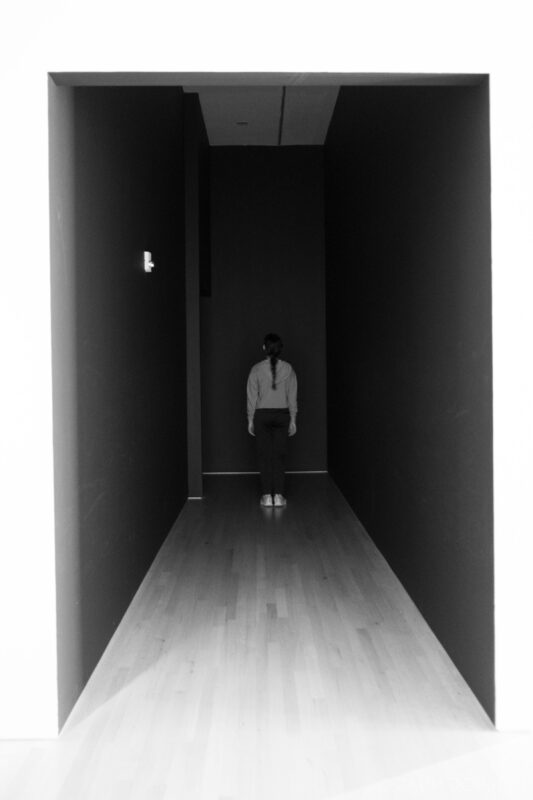
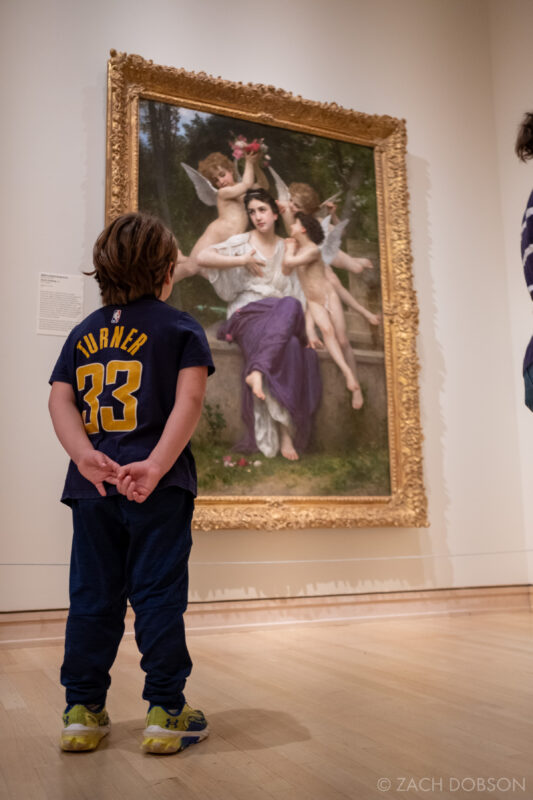
Viewing Art As A Community
When we view art with others, the people affect the feel of what we’re seeing. And since there is always a different combination of people in a museum, we never experience art the same way twice, even returning to a piece later in the same day.
Photographing visitors in the context of the art documents the unique experience we had that day.
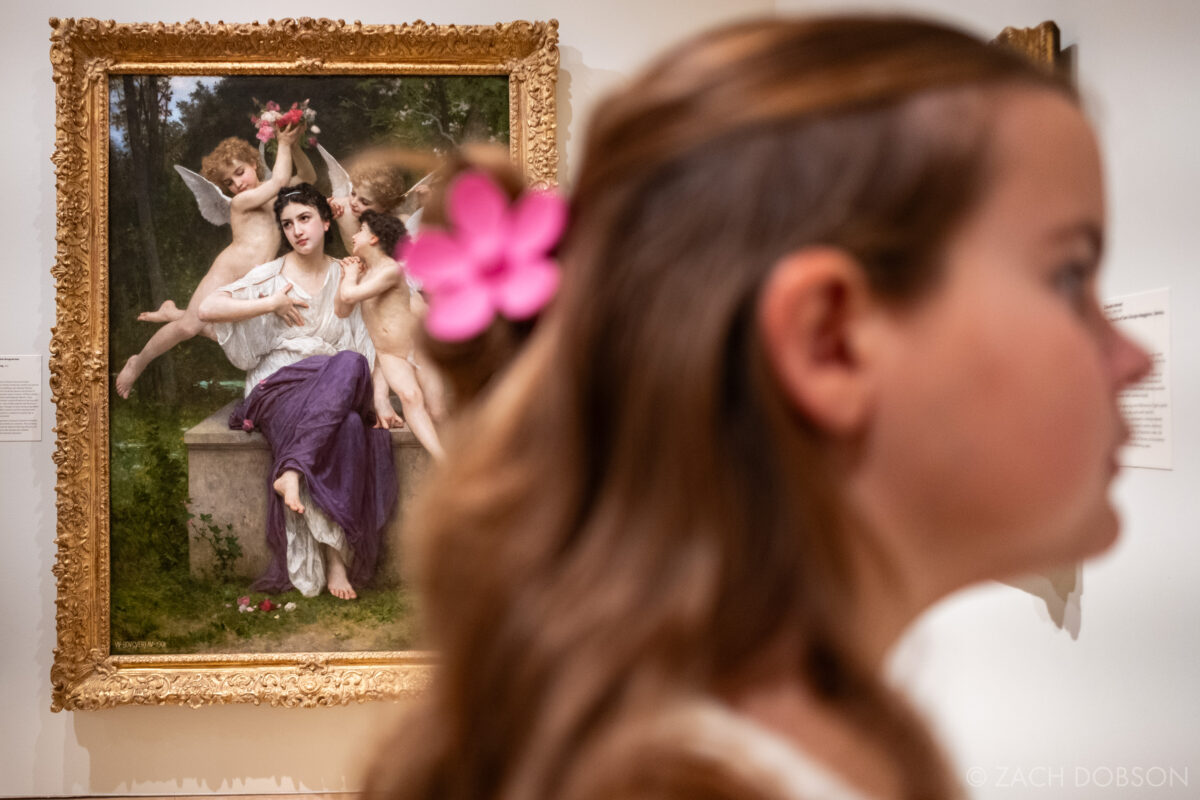
The Photographer’s Interpretation of the Art
I made a mistake and learned a good lesson from it…
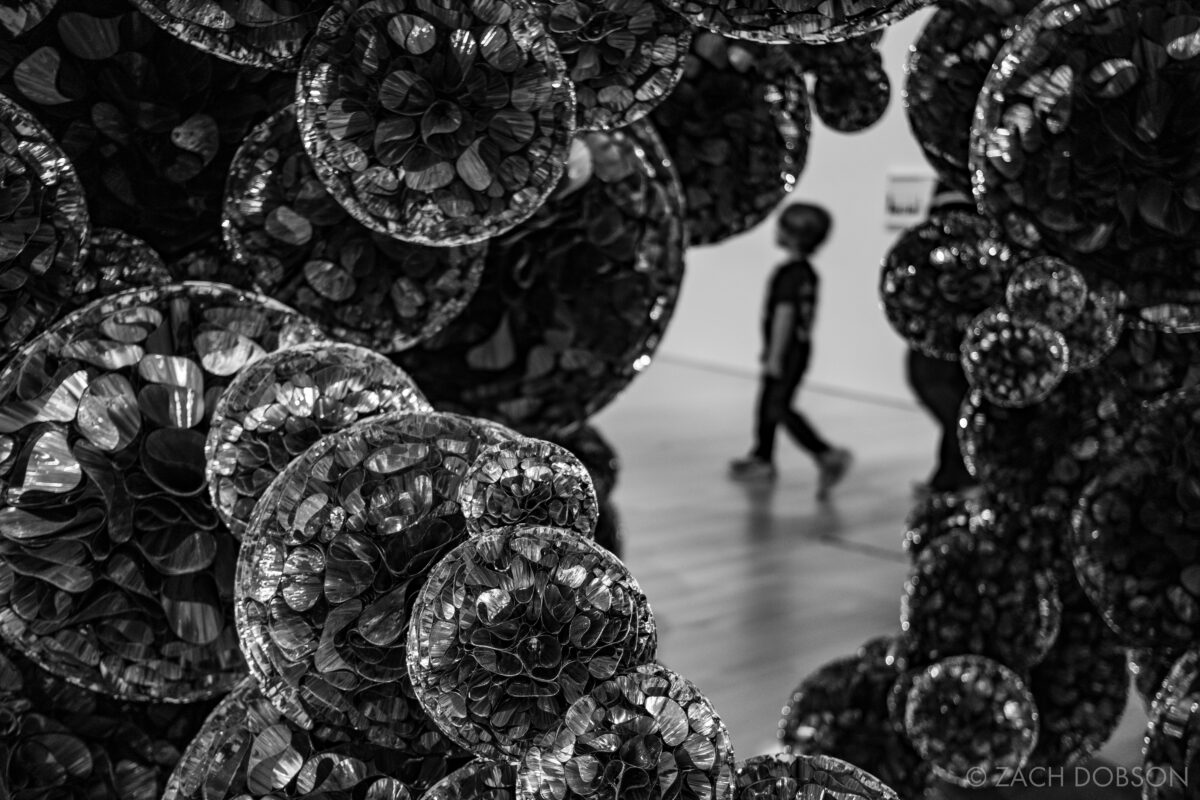
The photo above is the one I saw in my mind as I was looking at this sculpture. I composed a frame with a gap and I waited for someone to pass through. I wanted to give some scale to the artwork while showing how people move through the space.
But I’d actually taken the photo below first. I hadn’t locked in my camera settings and took the photo before I was ready. I noticed a person moving and I moved the camera, too. And a slow shutter speed slightly blurred everything. But in that accident, I found that I really loved the frenetic energy that showed up in the sculpture.
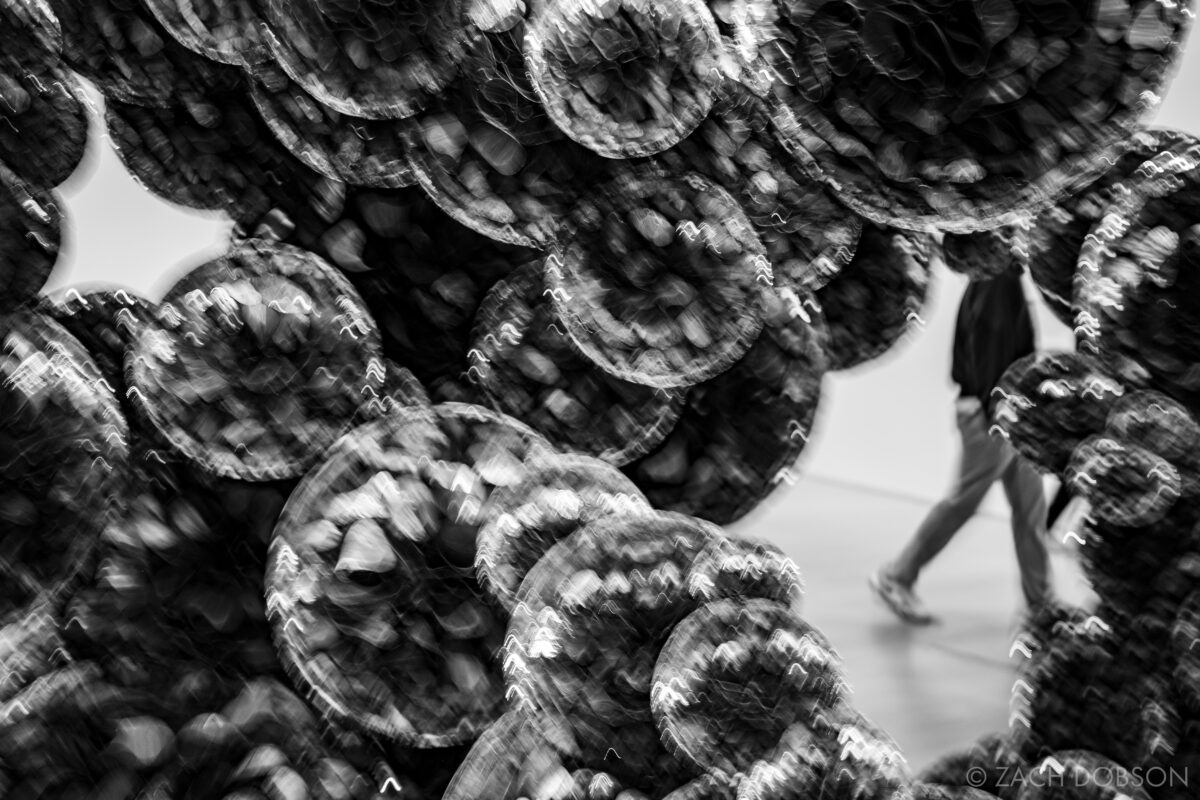
This made me realize that the techniques we use to photograph art will affect the viewer’s perception of the art itself. So in taking photos of art, the photographer can decide to be descriptive or interpretive.
It’s not just composition that affects the art being photographed, it’s also factors like lens choice, exposure, film stock, post processing, and whether we choose color or black & white.
The piece below is one of my favorite to photograph because the darkness is an essential part of the viewing experience. To honor the artwork and the feeling of being in the space, I let the photo be extremely dark as well.
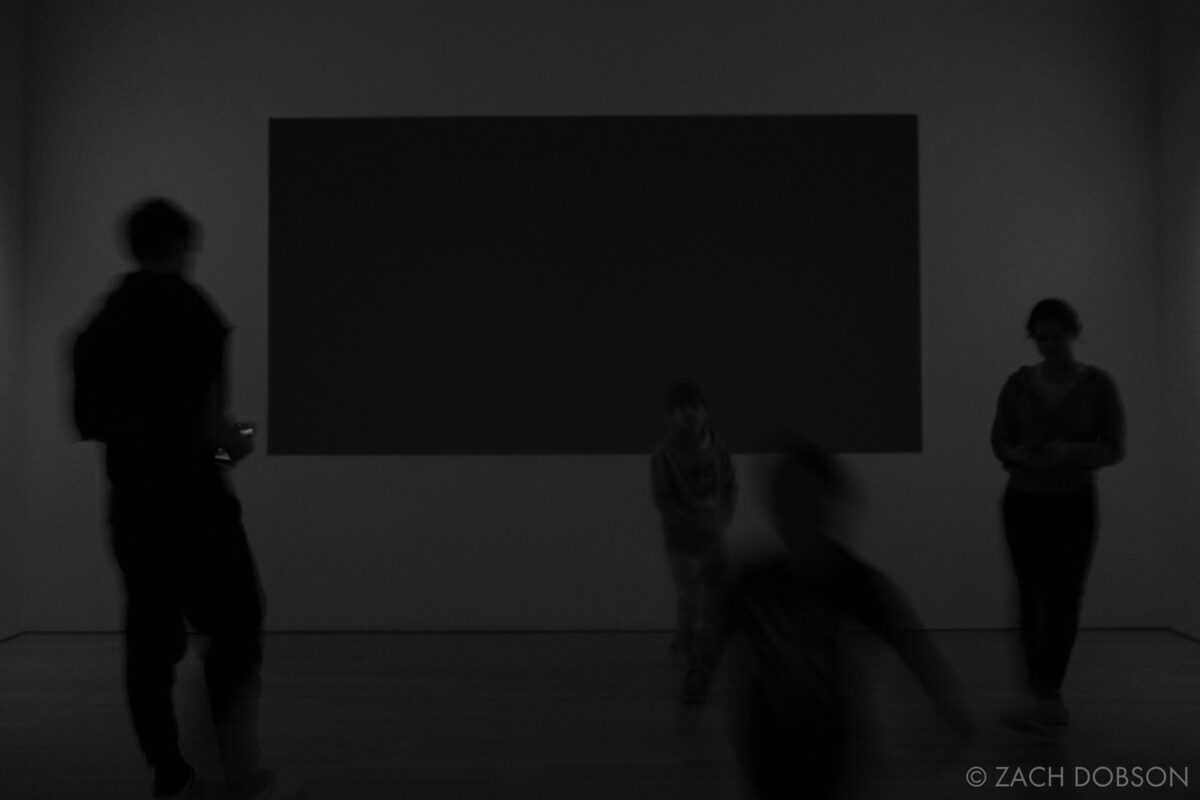
Self Portraits
Photographers love to interpret life through a lens, so it’s only natural we consider our own place in the world, too. For me, self portraits let me document my own existence and presence in a space. And at a museum, I’m documenting my experience documenting the experience of the museum.
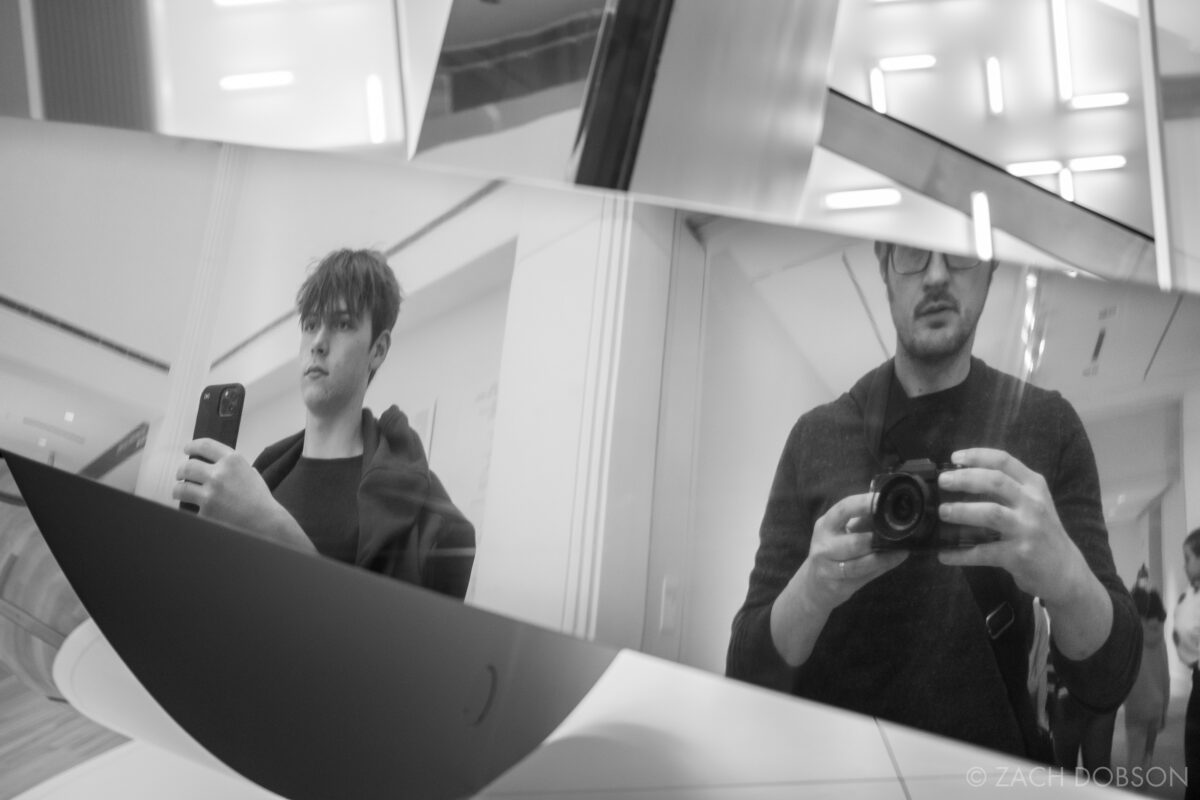
I also like to include family members in these photos because otherwise I’d have almost no photos of us together since I’m the one taking most of our pictures.
Also, museums are a great place for self portraits because they’re amplified visually by the interesting light, lines, colors, reflections, and other visual stimuli that are part of almost any museum experience.
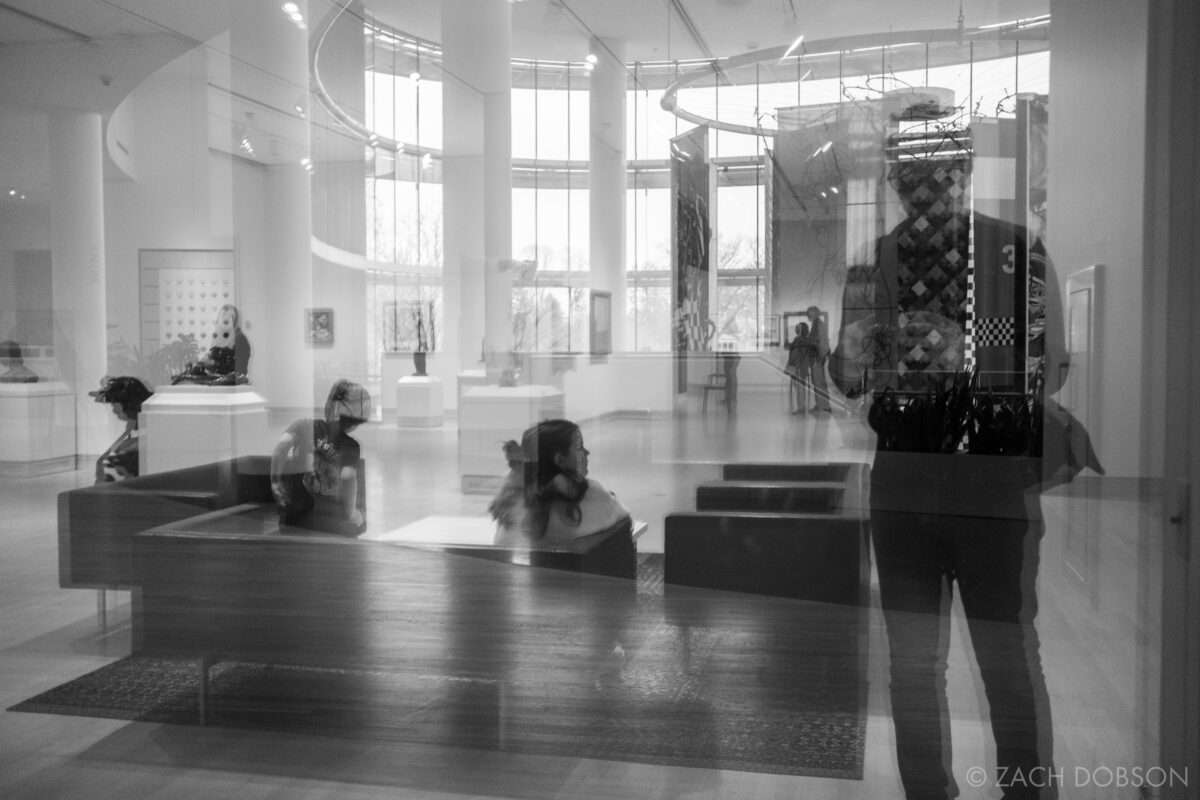
Taking a Closer Look
We can see an overall view of almost any piece of art online. So when I’m at a museum, I want to bring people into the details that grab my attention in person.
With the desk below, I was drawn to its grid-like, geometric nature and shadows, so I stepped forward to take a closer look at what drew my eye. And by physically getting closer, the viewer feels closer to the piece as well.
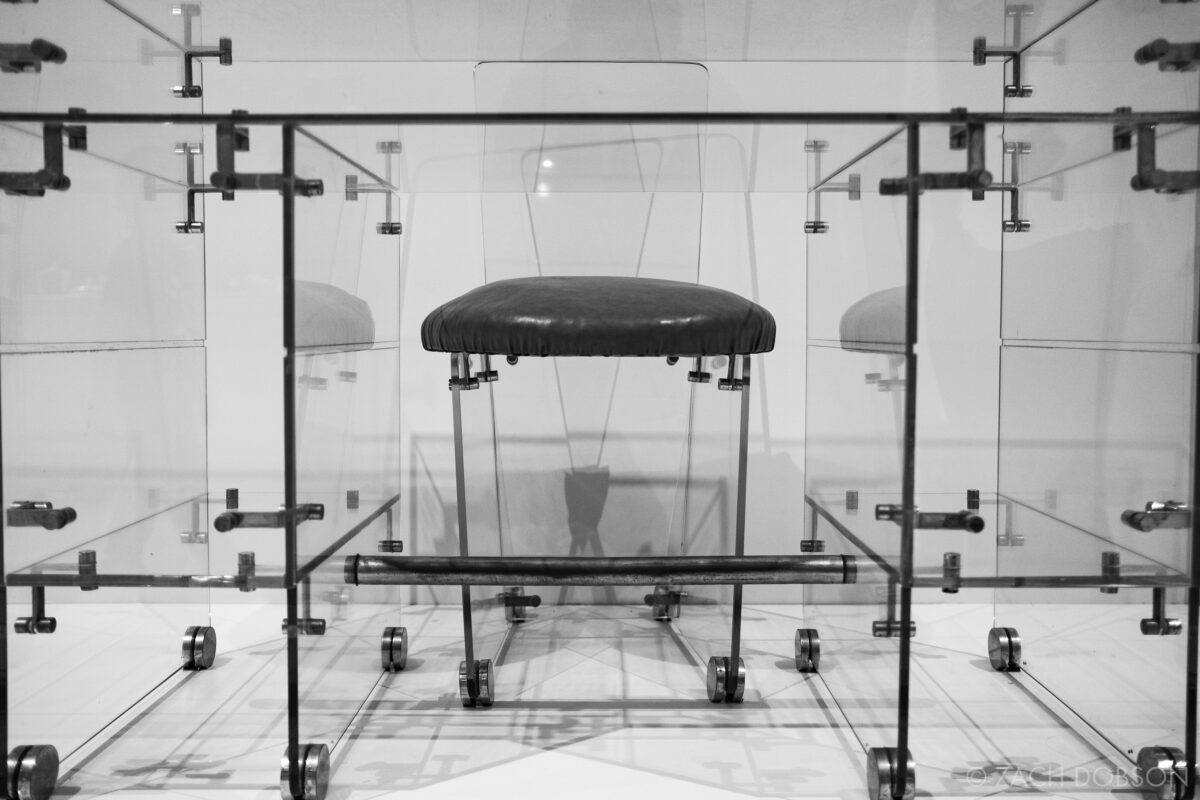
On this visit, I got an interesting perspective from my wife, Courtney. She told me when she stands in front of a work of art, she thinks about how the artist once stood in front of it too. I had never thought of it that way and I really like that idea!
So now when I view some of the detail photos I took, like the Van Gogh below, I can think about how each drop of paint and brushstroke was placed by the artist.
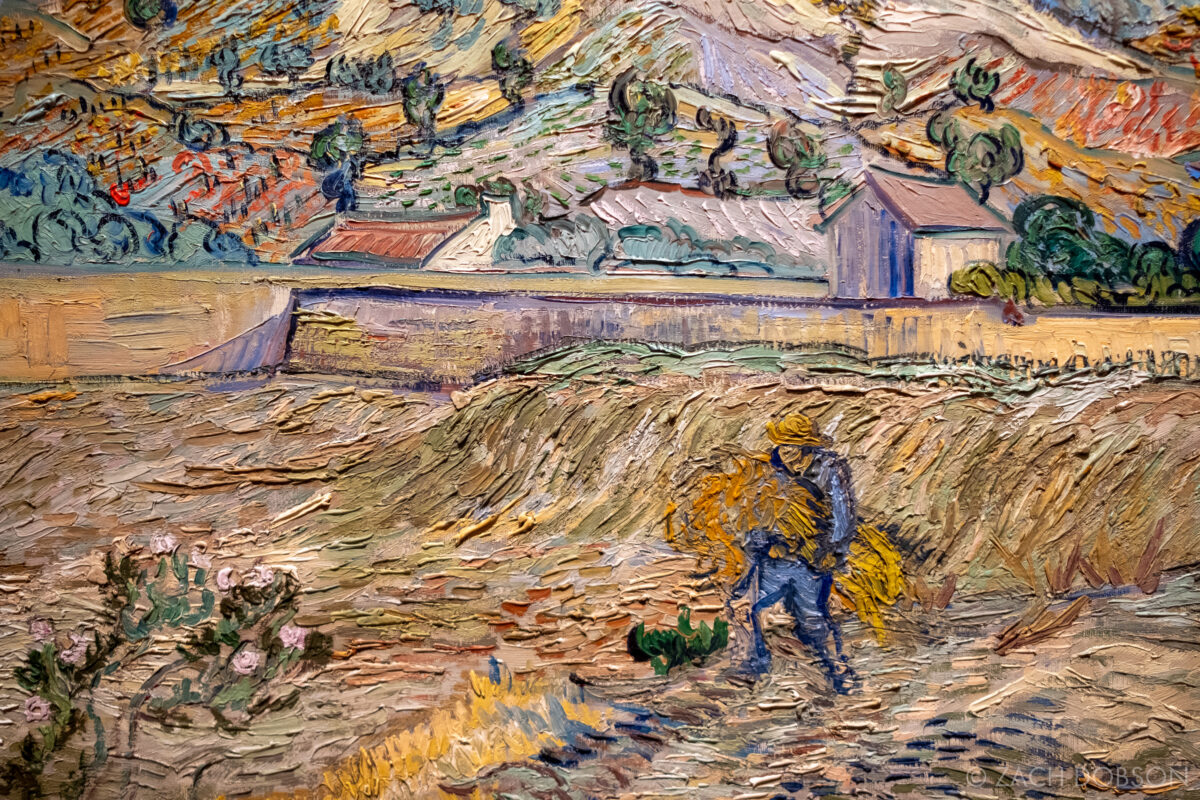
This is why detail photos are so important to include. They bring viewers in for a closer look, and more detailed consideration of the things we photographers found interesting in the moment.
Your Photography at Newfields and Beyond
What do you photograph at museums? Are you looking to create your own art at a museum? Do you prefer wider photos so you can recall your broader experience? Do you like “clean” photos of the work where the whole piece is visible so you can continue to admire it after you’ve left?
Let me know in the comments!
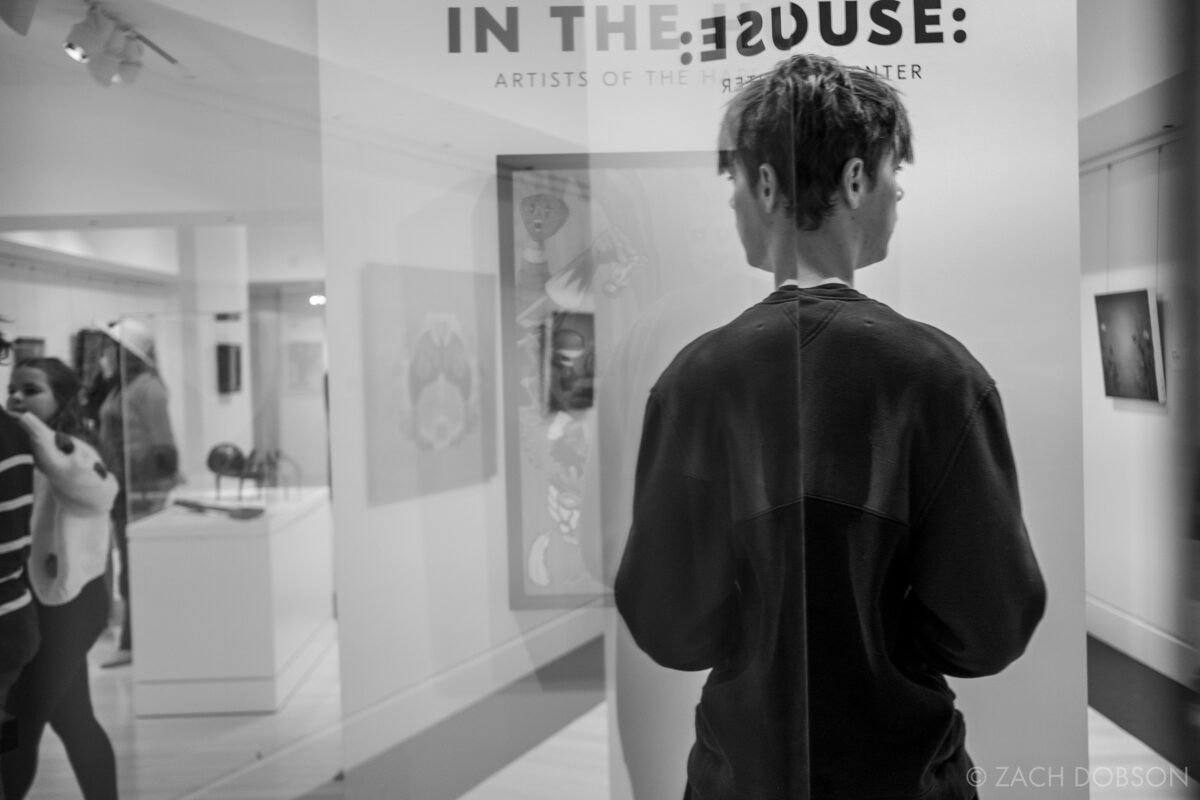
Resources
For other posts from museum exhibits I’ve visited, click here.
To schedule your own visit to Newfields, check out their website.
Check out this post on the museum photography of Elliott Erwitt.

